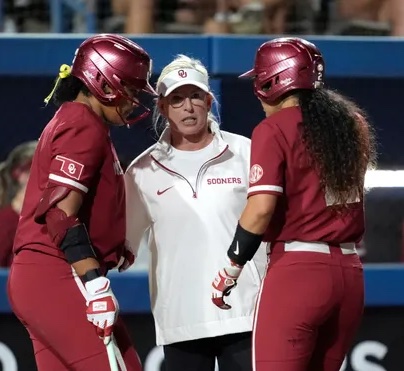For the second consecutive year, the Oklahoma Sooners find themselves in a familiar yet exhilarating position as the No. 2 overall seed in the NCAA Tournament. This marks another chapter in a program that has displayed tenacity and skill on the diamond.
Last season, Oklahoma faced off against Texas in the regular season, but it was the Sooners who ultimately made headlines when they avenged that loss in the Big 12 Tournament. As Selection Sunday rolled around, it was the Longhorns’ non-conference schedule that helped tip the scales in Oklahoma’s favor, setting the stage for a thrilling run that culminated in Oklahoma blitzing Texas in the Championship Series at the Women’s College World Series and securing their fourth straight national title.
Fast forward to this year, and while the stakes are as high as ever, the non-conference schedule once again played a pivotal role in shaping the tournament seeding. Texas A&M earned the top overall seed, and even though the two teams didn’t meet during the regular season, they both showcased their mettle in the SEC Tournament Championship. Unfortunately, Mother Nature intervened, leading to a co-champions designation instead.
The absence of a direct matchup between Oklahoma and Texas A&M created a situation where the quality of each team’s resume came under scrutiny. NCAA Softball Committee Chair Kurt McGuffin highlighted the competitive landscape when discussing the criteria that distinguished the Aggies. With 19 top 25 victories to their credit—leading the nation in that regard—Texas A&M’s impressive wins against Florida State and Texas Tech helped solidify their claim to the number one seed.
However, do not let the numbers overshadow Oklahoma’s own accomplishments. The Sooners boasted 18 top-25 wins, a testament to their strength even though they faced critiques regarding their non-conference schedule. Coach Patty Gasso takes pride in challenging her squad with a tough schedule each year, but this season’s approach was a strategic one aimed at integrating new talent. “You might look at our schedule and say they played a weak schedule. That’s fine,” Gasso remarked back in March, as her team prepared to dive into SEC competition. “I’ve got new players that need to learn and adjust. Now we need to be ready. There is no other answer. You have to be ready to go.”
When examining Oklahoma’s non-conference opponents, it’s worth noting that only San Diego State and UCF made it to the NCAA Tournament, which has sparked conversations about their early-season preparation. However, the Sooners quickly demonstrated their prowess upon entering SEC play, posting a respectable 17-7 record against a tough conference schedule. This included series against formidable opponents like Florida, Arkansas, Texas, Tennessee, and South Carolina.
In the SEC Tournament, Oklahoma added a notable victory against Arkansas and secured a win over 10-seed LSU—another opponent they didn’t face in the regular season. There’s no denying the sense of intrigue around how a potential matchup with Texas A&M in the tournament would have influenced the committee’s decision-making process. McGuffin suggested that the championship game is always a point of discussion for seeding, as it often leads to head-to-head evaluations.
In reflections on the two dominant teams, he stated, “I would say (they were) 1A/1B, because they’re both fantastic teams. The resume shows that.” Both Oklahoma and Texas A&M have brought elite performances to the forefront, illustrating just how tightly contested the seeding process can be in an exciting landscape of college softball. As the Sooners gear up for their tournament run, fans everywhere can anticipate what could very well be another thrilling chapter in their storied journey.







